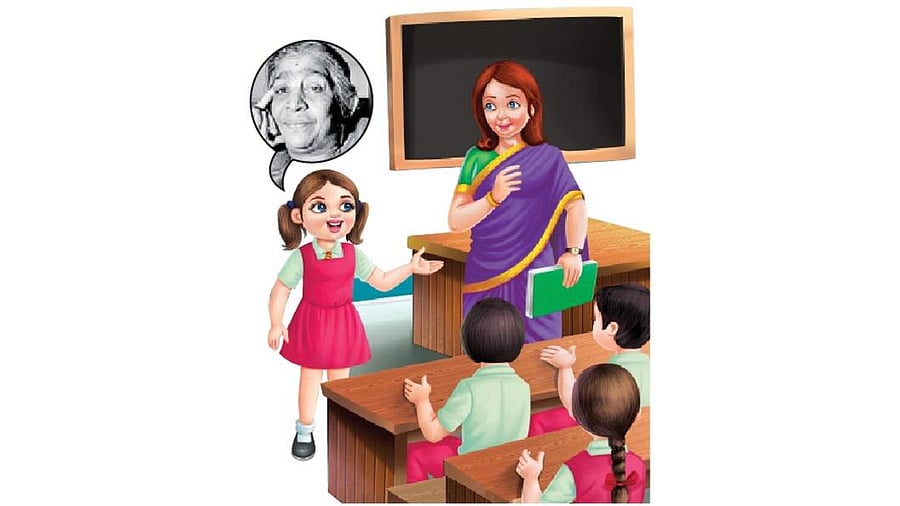
Image for representational purposes.
Credit: iStock Photo
Ms Kumar stood before her history class with a determined look. Today, she would introduce her students to the women who had fought tirelessly for India’s freedom — the unsung heroes of our Independence struggle.
She began, “Today we’ll test your knowledge about the women freedom fighters of India. We’ll have a quiz, and I want everyone to participate enthusiastically.” Ms Kumar assured the class that correct answers would fetch prizes too. The students clapped excitedly.
“First question,” she wrote on the board. “Who was the queen of Jhansi, known for her bravery during the 1857 Rebellion?”
Rahul raised his hand. “Rani Lakshmibai, ma’am?”
“Correct!” Ms Kumar beamed. “She refused to surrender to the British East India Company. Do you know her most famous phrase?” she asked.
Aparna spoke up: “‘Mein apni Jhansi nahi doongi’ (meaning ‘I will not give up my Jhansi’)”
“Exactly!” said Ms Kumar. She looked around. “Now, who was the first woman president of the Indian National Congress?”
“Was it Sarojini Naidu?” Rohan asked.
“Correct! She played a key role in the Salt Satyagraha and was also known as the ‘Nightingale of India’. Can anyone share another fact about her?” asked Ms Kumar.
Sakshi replied, “She was a strong advocate for women’s education and rights.”
“Well said,” the teacher nodded. “Alright, next question — who worked closely with Mahatma Gandhi and took part in the civil disobedience movements?”
“Kasturba Gandhi, Mahatma’s wife!” Shreya called out.
“Exactly. She endured imprisonment yet remained a pillar of support to Gandhiji,” the teacher explained.
The quiz gathered pace. “Who led a revolt against the British in Lucknow after the uprising of 1857?” Ms Kumar asked.
“Begum Hazrat Mahal!” said Nisha confidently.
“Correct! She refused to surrender to the British and continued the fight after her husband was exiled,” Ms Kumar read out.
Even students started asking questions now. “Who was Aruna Asaf Ali?” asked Akhila excitedly.
“She was another strong leader, who hoisted the Congress flag at Gowalia Tank Maidan during the Quit India Movement. She was also a trade union leader,” said Ms Kumar.
“Ma’am, who organised protests against the Simon Commission?” asked Aparna. “That would be Basanti Devi,” said the teacher, explaining further: “She led marches and encouraged women to join the movement. When her husband C R Das was imprisoned, she took over many of his political activities.”
Hands shot up again. “Ma’am, can you tell us about Kamaladevi Chattopadhyay?” Rohan asked.
“Sure! Kamaladevi was a social reformer and women’s rights activist. She joined the Salt Satyagraha and was jailed several times. Later, she went on to revive Indian handicrafts and theatre, leaving a cultural legacy behind,” answered the history teacher.
She asked next: “Which young woman attempted to assassinate the British governor of Bengal?”
“Bina Das,” answered Sakshi.
The teacher shook her head and said: “Good! She was only 21 at the time. Her bravery shocked the British establishment.”
The classroom buzzed with excitement. “Does anyone know about Matangini Hazra?” Ms Kumar asked.
Rohan asked: “Was she the one who was shot while leading a procession during the Quit India Movement?”
The teacher replied: “Absolutely. Even as bullets struck her, she kept shouting ‘Vande Mataram’ and held the national flag high. She’s fondly remembered as ‘Gandhi Buri’ (the old lady Gandhi).”
Recollecting something Aarti had read last week, she asked: “Who was Captain Lakshmi Sehgal, ma’am?”
Ms Kumar replied: “She was a commander of the Rani of Jhansi Regiment of the Indian National Army, formed by Subhas Chandra Bose. She inspired countless women to join the fight against the British rule.”
The students sat in awe. They had not heard of most of these stories before.
“Ma’am, why aren’t these women as well-known as male freedom fighters?” Aarti asked thoughtfully.
Ms Kumar’s face grew serious. “History has often overlooked their contributions. These women challenged both colonial power and social norms. It is our duty to remember them and keep their stories alive.”
Everyone was discussing about which women freedom fighter they planned to read more about. Ms Kumar overheard them and smiled — the quiz had done more than just test their knowledge — it had sparked curiosity.